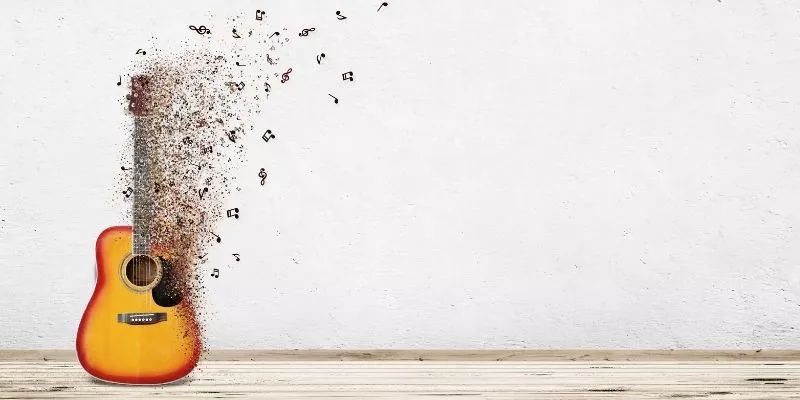If you are looking for a versatile guitar that can play many music genres and bands, the bass guitar is what you must consider. They are available in many sizes and shapes; however, the most common are big extended electric guitars that feature 4-5 strings. The consistency and accurate timing that bass guitar offers are unrivaled.
The primary role of the bass is to hold down the lows and keep the band in a tight rhythm. There are several different bass guitar types that we shall describe below. In this blog post, I will explain the significant differences in each of these models so that you can decide on the perfect one for you.
As the bass guitar comes in many shapes, searching for the right bass guitar can be overwhelming with such comprehensive options to choose from. As all genres offer different sound qualities compatible with different musical styles, it is essential to select a bass guitar that matches your requirements and play style.
However, it is essential to learn the various bass guitar types, regardless of whether you are an expert or an amateur.
6 Different Types of Bass Guitars
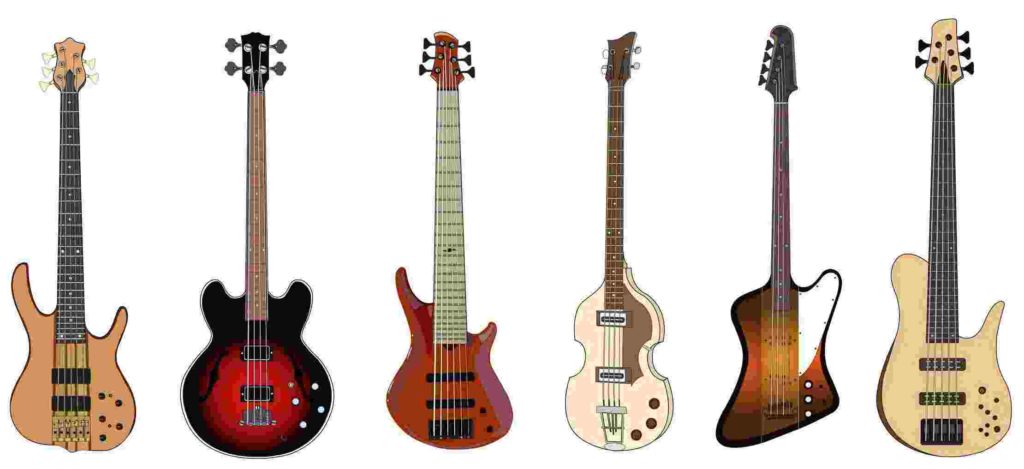
The bass guitars have many different varieties. The bass guitar is mainly made up of electric and acoustic guitars. Electric basses usually provide more options, namely solid-body basses and semi-hollow body basses. Let me know the most common bass guitar type we use.
What are the different types of Bass Guitars?
There are primarily 6 types of Bass guitars to choose from. Let’s explore their features and how they are different from each other:
Acoustic Bass Guitars

The acoustic bass is perfect for beginners as you pick up the bass and play. Most of them do not come with pickups and electrics. An acoustic bass has the same characteristics as an acoustic 5-string guitar. It also lets you play unplugged with full, intense sounds that are sometimes more suitable for acoustics.
Advantage
- Acoustic Bass Guitars are much louder than standard electric bass if you play them on the amp.
- The sound of an acoustic bass is similar to double bass by producing resonating sounds during the lower music registers.
- They are much lower in pitch when compared to standard guitars
- They are a mix of the electric bass in terms of playability and upright bass in terms of sound
What to look for best acoustic bass guitars?
The basses with larger bodies are capable of a louder acoustic bass. There is a difference between an acoustic guitar and acoustic bass guitar. The latter can meld the music differently, thus producing a unique tone quality.
Depending on your budget and the genre of music you want to play, you can choose the best acoustic bass guitar after considering its features.
Downside
The only downside of an acoustic bass is it is not as loud as the bass plugged into an amp. Hence, it is not suitable to play with a band of musicians or large venues. The sound of acoustic bass drowns quickly in such an environment.
Electric Bass Guitar
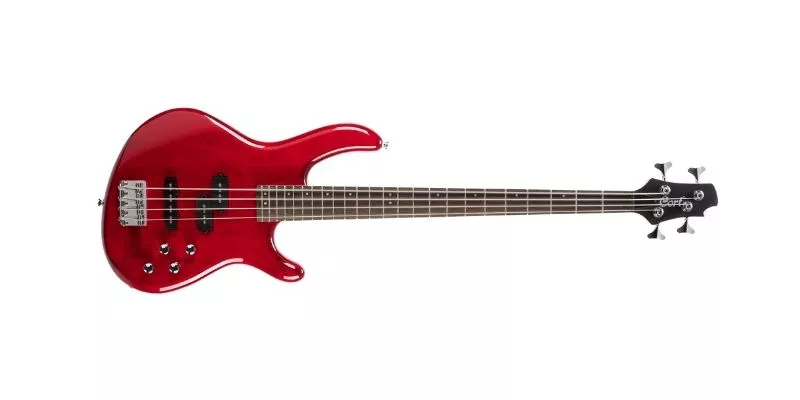
The electric bass guitar is the most commonly seen as the 4 string electric bass. The bass is widely employed in music industries from band to orchestra to theatre production, making it versatile. Also known as standup basses, bass guitars aptly produce lower-pitched musical tones.
Four-string electric bass guitars turn the one octave below compared to standard guitar’s EADGBE. Electric Bass guitars are best to consider if you play fingerstyle or ‘slap and pop’ thumb picking style.
There are four types of Electric bass guitars available in the market:
- Solid-Body: It is the most common type of electric bass, also known as Jazz Bass. It is close to an aggressive electric guitar in terms of play and used for jazz historically. It comes with a pre-amp that boosts its signal strength. It is less complex and lightweight. Hence many musicians use it in their pop music. It is made of solid wood (mahogany or maple) and comes with 4- strings.
- Extended Range: These guitars come with four, five, and even six strings to provide extra lower-tuning. For beginners, four and five strings are recommended.
- Hollow Body: Also known by the names as Jazz basses, Jaxx boxes, Jazz pickups, and Jazz guitars, it comes with a hollow wooden body, as the name suggests. This hollow enhances the vibrational sound from its amplified string. Music often partially fills the hollow with a cloth or other material that enhances the resonate to deepen the tone.
- Semi-hollow Body: A popular instrument among Jazz musicians, widely used in the fusion genre. It provides innovative ways to evolve with different music styles.
While some electric bass guitars have frets of conventional size, many come with one fret larger than the usual width to play more extended passages.
Advantages
- You get the acoustic bass sound quickly with electric bass guitars
- Playing rhythmically close notes are relatively easy
- They produce a more profound and fatter sound
Disadvantage
Compared to acoustic guitars, Electric bass guitars cost you high. The price of electric bass guitar starts from $250, which is not affordable for many.
Should I choose a 4-, 5- or 6-string bass guitar?
For beginners, 4 string bass guitars are highly recommended. The more the strings, the higher you need control with a lot more work on these strings. As the neck of the guitar also widens up with more strings, it becomes difficult to handle it with small hands. It would help if you also had more stretching and reaching to get a higher accuracy rate.
Five-string bass guitars are usually favored for heavy metal, heavy rock fusions, and jazz bass. A 6-string bass guitar is similarly an improvising instrument for jazz musicians.
Acoustic-Electric Bass Guitar
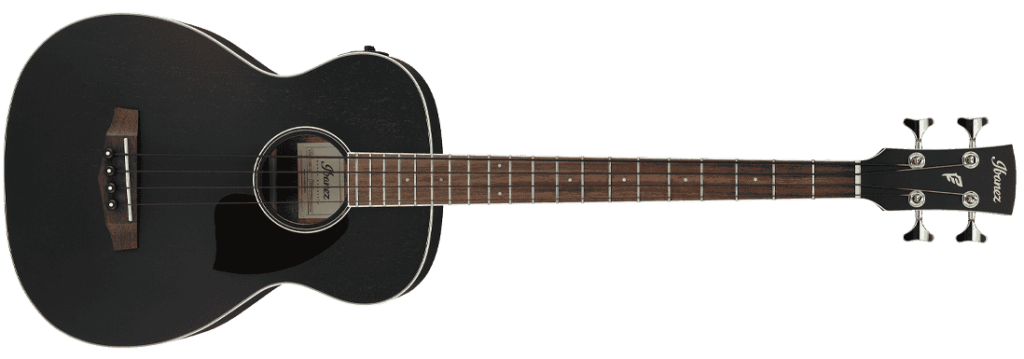
Today, many acoustic basses come with a set of electronics for playing unplugged gigs. If you want to sound out in a band of acoustic bass guitars, these features enable you to do without hurting your fingers quickly. The electronics help you to match the output levels with different instruments.
A simple electronic system is ideal for melding down the tone with different pedals. If you want to plug into a PA system or amp directly, advanced electronic systems are highly recommended.
They are also available in 4, 5, and 6 strings.
Advantages
- Ideal for amplifying the acoustic sounds
- Handy and lightweight as compared to electric and acoustic guitars
- A versatile bass guitar that can fit your intimate home to packed football stadiums
- They are playable in several varied settings
Disadvantage
Acoustic-Electric bass guitar lacks the richness and depth that any upright bass offers.
Fretless Guitar
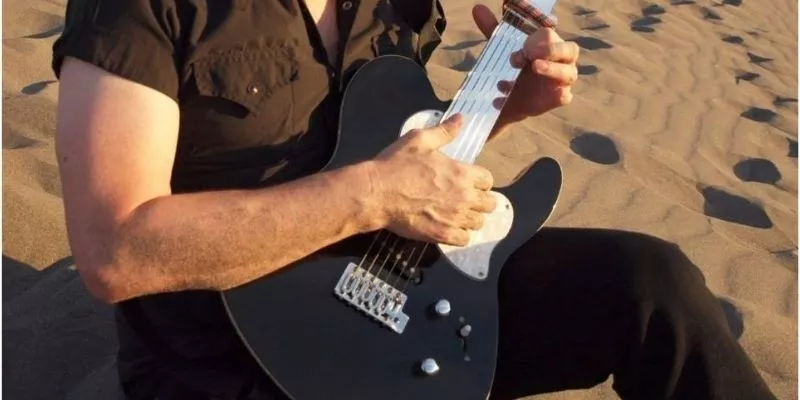
As the name suggests, such guitars have no frets over their fretboard. The purpose of frets (metal wired beneath the bass strings) is to divide the notes by pressing down each string accurately. It is ideal for a traditional western chromatic scale with 12 tomes (octave to octave).
Free bass guitars are not new, but there are still some competitors. An experienced bassist created this bass with good hearing. Since this device isn’t fretted, players should hear accurately. The best aspect of fretless bass guitars is that they give players a smooth and bouncy sound. It looks like a double bass with some modernity and versatility.
In addition, fretless basses create sliding harmonics that make them unique. Fret-free basses are proper on modern bands because they give total control over the sound.
Advantages
- Eliminates the limitations of just 12 notes to play different musical styles
- It comes with unique sound capabilities to make it the preferred choice for famous musicians like Jaco Pastorius
- Deliver all the microtones in between the regular tones.
Disadvantage
It is not appropriate for modern western music due to its inability to create proper notes intervals.
Fretted vs. Fretless Bass Guitars

When buying bass guitars, it’s possible to buy two fretboard styles: fretted bass guitar and fretless bass guitar. A fret-neck is a standard neck on guitars and has steel frets divided in half in the harmonic scale in each quarter. Getting the right notes is a great way to start learning instruments.
But fretless bass has a neck that does not contain metal frets and is smooth wood, reminiscent of a guitar and bass uprights. While many bassists consider fretless bass to have a more accessible tone to play, the note’s pitch is dependent upon your finger position.
Short Scale Bass Guitars
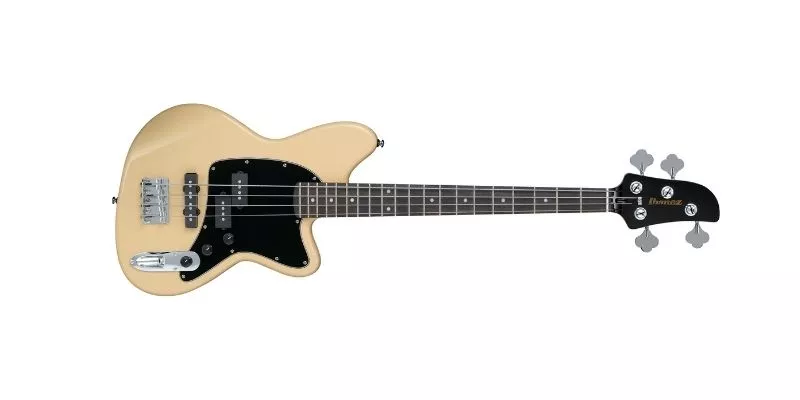
Short-scale electric bass guitars are your best deals if you have shorter hands or are a young beginner. These are not heavy or have very long bodies unless the regular bass guitars. It is relatively easier to play and tune on a short-scale bass guitar. Compared to standard bass guitars, short-scale basses offer more peculiar tones.
Bass in short scale is often referred to as P bass or Jazz bass. The only differences are the more minor scales or the distances between bridge and nut. Bass guitars are typically smaller at 30 ft. Standard bass guitars have dimensions ranging from 36 inches in height in comparison.
In addition, short-term adults can thrive in small bass guitar models. Remember, there are no frets, so flexibility has been stripped to provide more effortless operation and less burden.
P-Bass VS J-Bass guitars
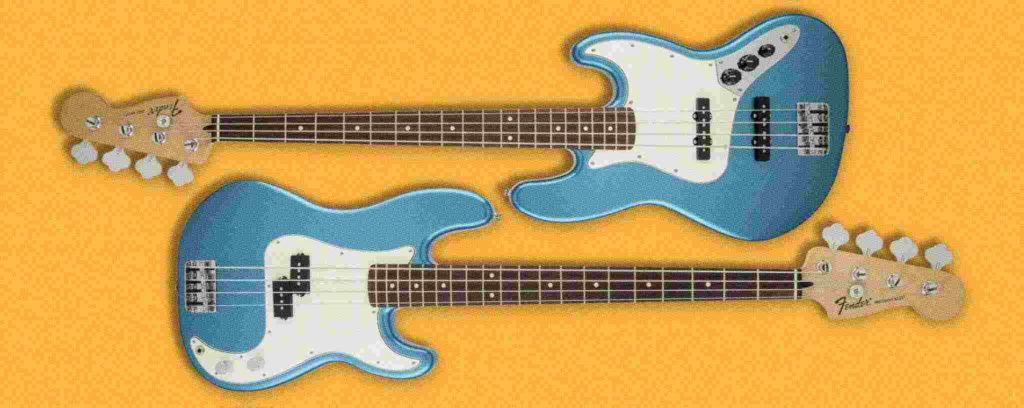
Fender Precision and Jazz Guitar dominate the music industry with bass guitars, and this is not a surprise! Leo Fender has created the first electric bass guitar in the early 50s. The current P-bass / j-bass is an old-fashioned classic built with the same classic features as it is today.
In modern times, these two most commonly used bass guitars – fender precision bass guitar and fender jazz bass come with many similarities. Both necks have a C-shaped maple fingerboard available in maple rosewood or pao ferri. Both basses offer body sizes in Ash or alder woods. Except for this similarity, the models provide their unique characteristics such as:
Sound: J-Bass guitars have more versatile and complex sounds than P Bass guitars.
Offset waist: Jazz Bass guitars are heavier at the neck than P Bass guitars.
Neck Shapes: The nuts of P bass are 1.625 ” wider, while the buts of J Bass guitars are 1.5″ wide. Hence the Jazz Bass necks are tapered, making them ideal for smaller hands. A shorter distance between the strings adds more speed and agility.
Coil type: Jazz style pickup is a single-coil pickup to deliver a much more precise definition. On the other hand, the P-Bass style pickup is a dual coil humbucker pickup.
Suitability: For progressive, jazz, or fusion, Bass guitars are best as they involve faster passages. For grunge, classic rock, punk, surf, or country songs, P Bass guitars are ideal to consider.
Long Scale Bass Guitars
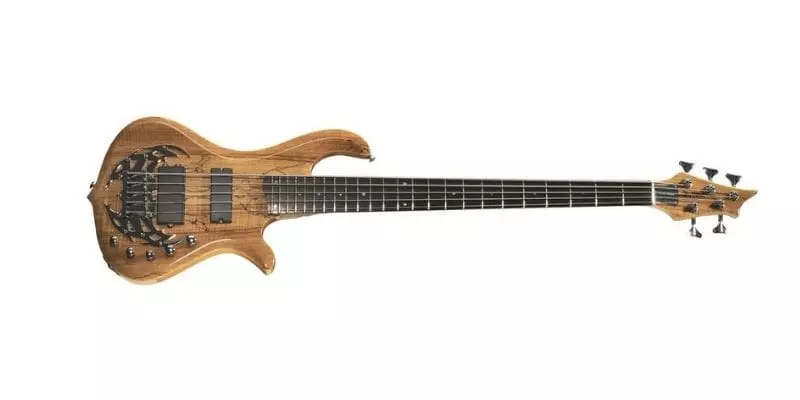
Bass guitars measure 34 inches from the bridge to the nut. It comes with a longer neck and is not appropriate for people with small hands and beginners. But if you are looking for an edgy tone with a more defined sound, Long Scale Bass Guitars are perfect to choose. But they come with top-heaviness and weight more than the standard guitars.
Advantages
- More articulation with strumming
- offers you note-to-note separation
- More Volume than small scale basses
Disadvantages
The string tension goes very high as the scale goes up. It is pretty hard to play long-scale bass guitar strings at high notes compared to small-scale bass.
The extra-long bass guitar is one of the Long scale bass guitar types measuring at 35″ or 38″. But there is also an added difficulty with such guitars in reaching their lowest frets.
What Size Bass Guitar Should I Buy?
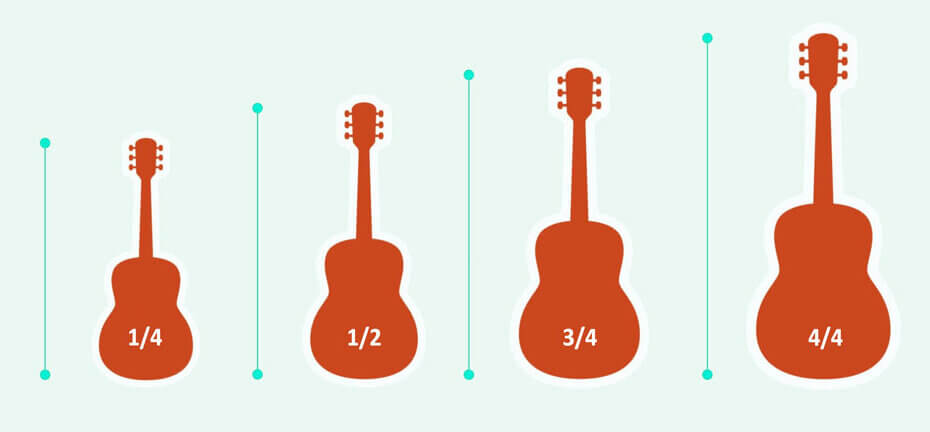
The more comfortable you feel playing your guitar, the better you will learn. It makes bass guitar size a common factor in the selection process. Since bass guitars can be adapted to various lengths, it is vital to determine how large the guitar will fit with your physiology.
Bolt-on vs. Neck Through Body
Some debate has been expressed over how best bass guitar construction styles will look. A bolted neck design is the most commonly used and traditionally constructed technique where the neck has been welded to each other with wood. It has several advantages that it provides, such that it can be redesigned if it has been damaged.
The neck of the guitar is a neck-through a body, and the neck’s wood covers the entirety of the guitar. In general, necks provide better stability and facilitate a faster energy transfer. These basses are constructed of several pieces of wood glue.
What to Consider When Buying a Bass guitar?
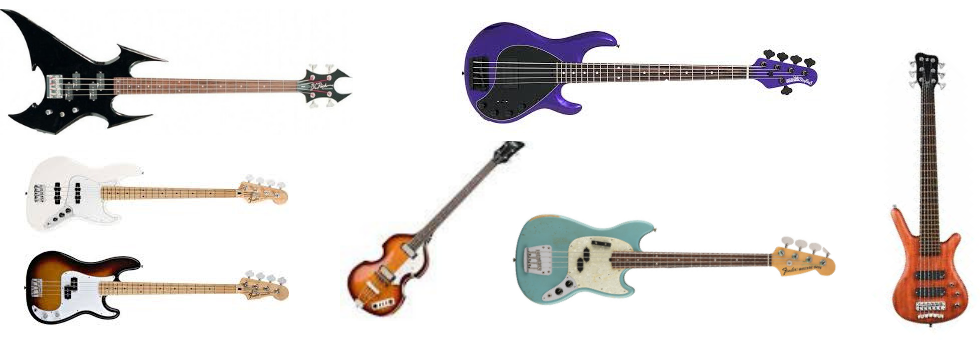
It can be challenging to choose the right bass guitar. The right bass has several characteristics that will fit your needs, including price, size, and more. What should be considered when evaluating your bass?
Price:
Depending upon the bass guitar, the price ranges between $150 and $1500 and is much higher. You should consider how much your money can cover buying bass guitars. The bass guitar market is booming with many excellent starters, and most of the cheaper options are still outstanding.
Passive Vs. Active pick-ups
Most Bass guitars offer two different kinds of pickups. Passive pickups popular from the beginnings of electric bass provide a dynamic and warm sound. A disadvantage with the passive pickup system is that the sound you are getting is less accurate. The passive bass pickups are not always bad, but these are good choices if a guy prefers fat punches.
An active pickup is more mature than a passive pickup. Most contemporary bassists find them cool, and others consider them quite heretical in their views. The sound produced from an active pickup is bright, pronounced, and transparent.
Bass Tonewoods
The sound is essential in playing bass. Part of bass’s appeal comes from listening to the thick, robust sound produced that gives songs an excellent low-end sound and a rhythm that gives them a soul. For bass guitars to have a good sound pickup is a vital element. For beginners, don’t bother too much about different tonewoods incorporated to make a bass guitar’s body. You will learn more about your favorite sounds and have more fun experimenting with different sounds.
Are there 4 or 6 strings?
The temptation is to stick with good 4-string bass for the question that needs resonating. Regular 4-string basses have narrower necks than 5-string basses and are tuned in E- A-D format making them easier for players and easier for learning. Nevertheless, many genres prefer five-string basses. Contemporary country and worship songs appear to contain more song roots in B so that its B-A-C/G tuning is optimal. Whatever style, five and sometimes 6 string basses are available, giving bass players greater freedom of creative play.
Which Bass Guitar Is Right For You?
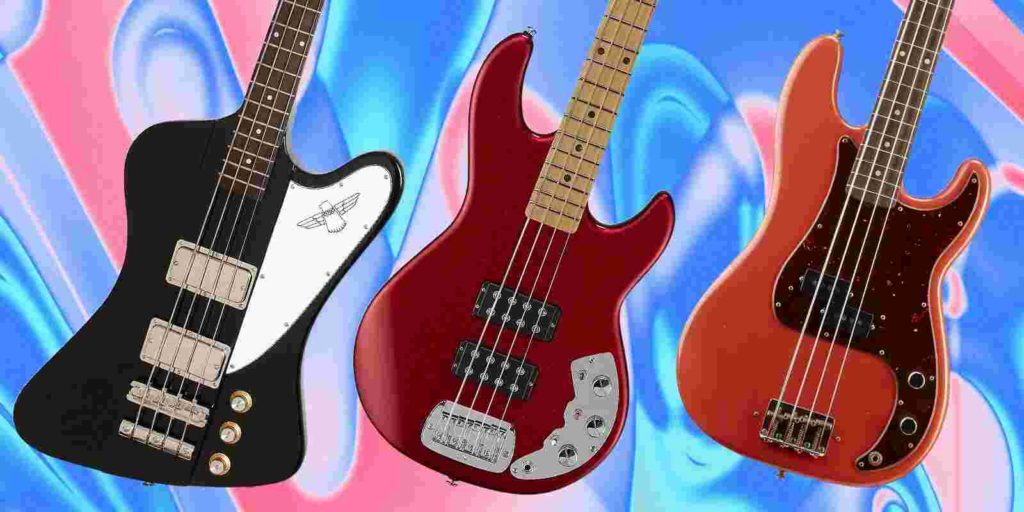
No single aspect can make or hinder an individual decision to purchase a bass guitar. It is possible to make different decisions. Try some bass guitars to find the perfect one for your budget. Find an old 4string bass with fretted strings. Although bright worried or 5- or 6-string basses might look great, they are challenging to play.
Frequently Asked Questions
What is the most common Bass Guitar?
Atop it all is a fender Precision Bass also called the P Bass. P basses are highly popular and are probably the most sold electric bass of any age though it can not be proven.
What Types of Basses are there?
The term bass has been used widely to describe the bass guitar as two different bass genres. The string bass is commonly seen in orchestras and jazz bands. It is a violin on steroids. It is occasionally called “double bass” or ” upright bass. “
What are the Differences in Bass Guitars?
It is generally smaller than the typical electric or acoustic guitars are. It’s almost identical to guitar, but its notes are a bit lower than the octave than the guitar. Its specific job for bands, therefore, includes supporting instruments.
Final words
There’s a diversity in musical styles, from bass guitars to acoustic guitars. You may try a few times to expand your knowledge about this instrument. Several different bass types can be used depending upon the genre. Tell me the bass type you use? Share the experiences by commenting below!

